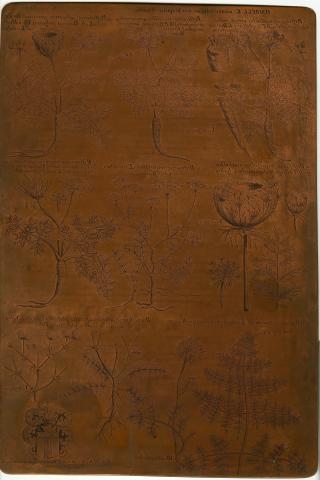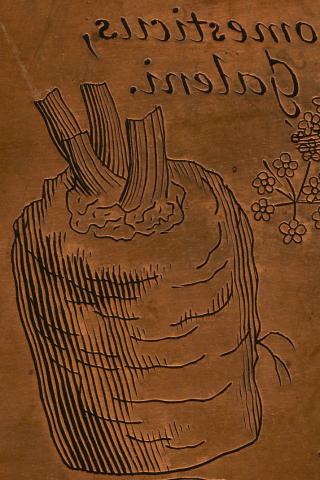Printing Morison's illustrations
Morison’s Historia is lavishly illustrated with copperplate engravings. Unusually, the copper plates from which these illustrations were made by the University Press have survived to the present day. In 1996, Anne Hancock, from the Department of English at the University of Bristol, and Peter Foden, then archivist of the Oxford University Press, discovered all but one of the original copper plates for the Historia, wrapped in sugar paper, being used as counterweights to a lift in the Radcliffe Science Library, University of Oxford (Hancock, 2006). However, the tarnished surface of the plates indicated that they were once wrapped in printed text, and probably tied together. The plates were subsequently catalogued, and are now conserved in the Sherardian Library of Plant Taxonomy.
The physical characteristics of all 291 surviving copper plates have not yet been fully determined. The summary characteristics of the measured copper plates are:
Width – sample size = 141; mean (standard error) = 242.7 (±0.32) mm; range = 229 mm to 256 mm;
Length – sample size = 111; mean (standard error) = 358.3 (±0.66) mm; range = 341.5 mm to 373.5 mm;
Thickness (inferred) – sample size = 110; mean (standard error) = 1.32 (±0.02) mm; range = 0.88 mm to 2.06 mm;
Weight – sample size = 290; mean (standard error) = 1039.9 (±8.14) g; range = 729 g to 1555 g.
In 2017, twenty plates from the Historia were professionally cleaned by the Department of Conservation in the Bodleian Library.
Reference
Hancock A 2006. Robert Morison, the first Professor of Botany at Oxford. Oxford Plant Systematics 13: 14-15


